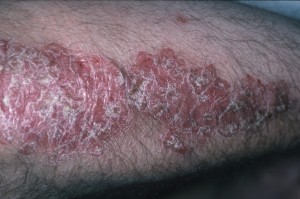 The NICE guidelines for psoriasis were published in October 2012. Its 61 pages are quite a lengthy read and there is quite a lot to digest.
The NICE guidelines for psoriasis were published in October 2012. Its 61 pages are quite a lengthy read and there is quite a lot to digest.
[Psoriasis: The assessment and management of psoriasis. NICE clinical guidelines 153; issued October 2012. http://guidance.nice.org.uk/CG153/Guidance/pdf/English]
What do the NICE guidelines for psoriasis say?
It is of common knowledge amongst dermatologists that obesity, high blood pressure, diabetes, high cholesterol levels and alcohol intake are things that any dermatologist should address in any patient with psoriasis.
[Federman DG, Shelling M, Prodanovich S et al. Psoriasis: an opportunity to identify cardiovascular risk. Br J Dermatol 2009;160: 1-7.]
In addition, the NICE guidance mentions these conditions as one of their key priorities for implementation and the conditions are classified as ‘comorbidities’ (which means in essence the presence of two or more coexisting medical conditions).
Yet despite this, it is surprising how few of the general public are aware of this fact and patients with psoriasis are more often than not surprised if questions about alcohol intake and smoking are brought up in their consultation for their psoriasis.
Alcohol and your health…
Light to moderate alcohol consumption (up to one drink daily by women and one or two drinks daily by men) is associated with effects which are protective of the heart with a reduction in total mortality of 18%. Alcohol consumption that is greater than this is associated with increased mortality in a dose-dependent fashion.
[O’Keefe JH, Bybee KA, Lavie CJ. Alcohol and cardiovascular health: the razor-sharp double-edged sword. J Am Coll Cardiol 2007; 50(11): 1009-14.]
An extensive body of data shows what we call ‘J-shaped’ associations between alcohol intake and a variety of conditions which include coronary heart disease, diabetes, high blood pressure, congestive heart failure, stroke and all-cause mortality.
This J-shaped relation is thought to be due to increases in blood pressure with increasing alcohol consumption that offsets the benefits of increases in HDL cholesterol (a type of cholesterol) which is protective at low levels of alcohol consumption.
[Foerster M, Marques-Vidal P, Gmel G et al. Alcohol drinking and cardiovascular risk in a population with high mean alcohol consumption. Am J Cardiol 2009; 103(3): 361-8.]
What role does alcohol play in psoriasis?
In one study looking at alcohol consumption in patients with psoriasis, almost a third were classified as having a problem with alcohol and 22% drank in excess of 20 drinks per week. 13% of patients with psoriasis thought they had a current problem with alcohol abuse and 18% had a past problem with alcohol abuse.
[Kirby B, Richards HL, Mason DL et al. Alcohol consumption and psychological distress in patients with psoriasis. Br J Dermatol 2008; 158: 138-140.]
There is also evidence that men who have psoriasis drink more alcohol than men who don’t have psoriasis, with the mean intake of alcohol being higher even before the onset of psoriasis.
[Poikolainen K, Reunala T, Karvonen J et al. Alcohol intake: a risk factor for psoriasis in young and middle aged men? Br Med J 1990; 300: 780-3.]
In clinical practice, we have to ask the question about alcohol because if a patient can reduce his alcohol intake, it can make quite unmanageable psoriasis somewhat more manageable.
What about the other conditions mentioned in the NICE guidance for psoriasis?
Because psoriasis is now commonly associated with conditions such as high blood pressure, high cholesterol levels, obesity, diabetes and heart conditions (conditions which form part of the so-called ‘metabolic syndrome’), we also ask about smoking.
Quitting smoking, losing weight and bringing blood pressure, cholesterol levels and diabetes under control can also help in the management of psoriasis.
Many of us may have had a ‘dry’ month of January. That may not necessarily have been a bad thing, especially for the psoriatics amongst us.
Regards,
Sandy
Dr Sandy Flann, Consultant Dermatologist
